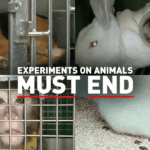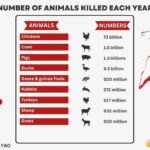Animal cruelty transcends mere physical abuse; it serves as a poignant reflection of the ethical and moral fabric of our society. In numerous instances, the juxtaposition of man’s compassion for animals against his capacity for cruelty reveals a complex societal phenomenon that invites deep introspection. Why, in an era characterized by advancement and enlightenment, does animal cruelty persist as a pressing issue?
The stark reality is that animal cruelty manifests itself in myriad forms—ranging from neglect and abandonment to overt violence and exploitation for sport or profit. This multiplicity indicates that the phenomenon is not an isolated issue but rather a symptom of larger systemic problems entrenched within our societal constructs.
One of the primary reasons animal cruelty remains a significant problem today is the pervasive culture of desensitization. In an age saturated with media, the normalization of violence—whether against animals or humans—has led to a numbing of empathy. Individuals are exposed to graphic images and videos, often sensationalized, which can create a paradoxical effect; rather than inciting compassionate action, these representations can foster apathy and disengagement. What once evoked outrage may, unfortunately, become mere background noise in a world inundated by cruelty.
Furthermore, the commodification of animals plays an integral role in sustaining practices that court cruelty. The agricultural industry often prioritizes profit over the well-being of living beings; factory farms epitomize the grim mechanization of once sentient lives, reducing them to mere cogs in a relentless economic machine. The treatment of these animals, in pursuit of efficiency, is frequently inhumane. The meat, dairy, and egg industries thrive on practices that prioritize production over compassion, fostering an environment where cruelty can flourish unchecked.
On a broader spectrum, societal attitudes towards certain species may also exacerbate instances of cruelty. Dogs, cats, and horses often garner affection and protection, while countless other species—be they farm animals, exotic pets, or wildlife—are systematically neglected or exploited. The dichotomy in societal value placed on different animals can lead to a hierarchical perception where some lives are deemed more worthy of protection. This hierarchy not only fosters cruelty against the marginalized species but also dilutes the shared responsibility humans have to prevent suffering for all living beings.
Moreover, the intersection of poverty and animal cruelty illuminates another fascinating aspect of this issue. In underprivileged communities, the struggle for survival often pits human needs against the well-being of animals. Limited resources can lead to neglect, abandonment, and outright cruelty, as individuals prioritize their fundamental survival over caring for pets or wildlife. Herein lies a cyclical problem: economic disenfranchisement breeds cruelty, while cruelty begets further societal neglect and degradation, perpetuating a cycle of suffering.
Education, or the lack thereof, catapults itself into the discussion as well. Many individuals grow up without an understanding of animal welfare, leading to a lack of empathy and care in their interactions with animals. A robust educational framework that prioritizes humane treatment and respect for all living creatures could drastically alter this trajectory. Initiatives aimed at promoting compassion in the younger generations are vital; embedding an understanding of the importance of empathy towards animals within educational curriculums can catalyze a shift in societal attitudes.
The legal landscape surrounding animal rights is another critical area warranting scrutiny. While various laws exist to protect animals, the enforcement of these regulations often falls short. The penalties for animal cruelty can be insufficient, failing to serve as a deterrent against acts of violence and neglect. Moreover, loopholes and exemptions often provide a safeguard for those wishing to exploit animals for personal gain. Strengthening animal welfare laws and ensuring strict enforcement could alter the landscape of cruelty, reshaping the societal norms that underlie these actions.
At a deeper level, human psychology plays an influential role in the prevalence of animal cruelty. The notion of dominance and control can motivate individuals to commit heinous acts against animals, expressing a need for power that transcends mere survival instincts. Understanding this psychological dimension is essential in addressing the roots of cruelty; rehabilitation programs for offenders may reduce recidivism while fostering a culture of accountability and compassion.
In conclusion, animal cruelty poses a multifaceted problem intricately woven into the fabric of our society. It reflects broader issues of desensitization, commodification, economic disenfranchisement, and flawed legal structures while beckoning a reconsideration of societal values and attitudes. Elevating the conversation surrounding animal empathy, promoting education, and reforming laws are crucial steps toward curtailing this unfortunate reality. As stewards of the earth, the responsibility lies within us to advocate for those who cannot advocate for themselves, to cultivate a society that values compassion and integrity, and to ultimately heal the wounds inflicted on our fellow creatures. Addressing animal cruelty is not merely an act of kindness; it is a vital cornerstone in building a just and humane world.






